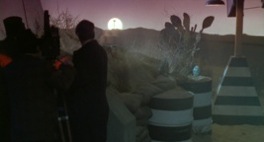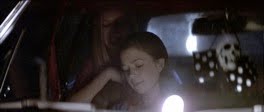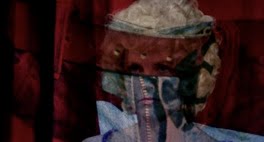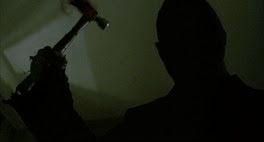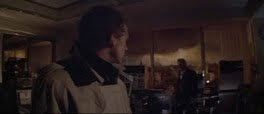The Funhouse may be too brilliant for its own good.
It is absolutely strident and brilliant.
I nitpick on it for reasons that I've realized seem to ripple from the idea that Hooper's profound gestures do not manifest in grandiose or outwardly commensurate brushstrokes, but if
The Funhouse has any valid flaws, or dullard, genre-bound lack, these small things are subsumed by the sheer quantity of that which absolutely astounds me within the film, which are in fact embedded in layers upon layers of subtlety: subdued characterization, beguiling abstraction, internal structures, the subtlest formal stridency, all this within the generosity and order of a fullest dramatic storytelling...
Do I dare go so far as to say it seems to be the one film that rivals Hitchcock's
The Birds in that film's absolute superiority of profound idea? Of a miraculous combination of narrative with metaphor, allowing a languorous narrative and uncontainable formalist constructs to create a film-poem that locates structuralist cinema within the emotional, allegorical story
(my god, both chronicling female heroines'
falling within narrative wringers lined in existential realization... climaxing in their happenstance
stumbling into vivid dungeons where they face the absolute extremity of the monster(s) confronting them!)
?
It is strident and dialectical, all without losing Hooper's soft and articulate classical style, and his aesthetic values of the theater
space and the textures of subdued life.
Subtleties of theme and characterization abound, metaphor proliferates in the tapestry of its
vignette structure, and its commitment to allegory sears through the narrative seams in its constant annunciation of the uncanny
(the profoundly uncanny being truly a recurring mark of a Hooper narrative).
I am left inactive and not urged to write by feelings of total satisfaction with the existence of the film and its seeming promotion
without self-promotion of cinema's capable richness, locked off in its own quiet agenda (one buried in genre modesty and the studio system) of ascendent self-realization of subtle complexity and subtle meaning. My inability to tackle the
abundance that this film
does, in every camera decision and every a-narrative inlet, is liberating and paralyzing.
For something closer to that sort of run-down, visit
The Funhouse Blog, authored by my close associate Matt H., and a publication which I contribute to. The most recent post is a smart review of the recent US Blu-Ray release, which brought on this post and which I was happy to have sat with Matt in a first unveiling and viewing. Of course, in his Audio Commentary, Mr. Hooper betrays very little of what may be going on in that head of his -- outside of divulging a bit of his process: he doesn't storyboard much, usually he only does it when doing "action" scenes, and he likes to let his actors feel a scene out themselves in rehearsal, then apparently takes it from there.
God, I hope Hooper had something to do with the opening credits and the matching of character or contributing creative hand with analogous puppet. Because it is so brilliant... so cerebral in context of the film!
(A truly painstaking and meticulous recreating of the shower scene.)
(The embodiment of an emotion within a single frame and a single posture - a recurring ability of the exquisitely mannerist Hooper.)
(The subtlety and delicacy of characterization: the ebbing emotion on Joey's face.)
Ugh, don't even get me started on this following moment... as profound and heady a cinematic formulation as any I've ever encountered in a film...
Oh, the "Amy plopping into the couch" shot: another small triumph in my eyes.
Hooper is not afraid of the distancing effect of what can be seen as awkward shot composition. Characters in his films always are butting themselves up closer to the camera than is orthodox in traditional cinematic invisibility, and thus buttress the idea of Hooper's ironic, cerebral cinema. Here, Amy's sidling into a very narrow space (and very narrow focal range), between couch and camera, results in an amusingly put-upon focus pull and gives an appropriately child-like sense to Amy, in the relation of her to the camera/us: so close to her, so aware of her clumsy adolescent physicality.
Please never tell me, let me live ignorant, if you find out that these shots of Amy and her father's arm largely not matching between them [look at the arm] was anything but completely intentional:
This dog scare scene is literally mathematical (also aesthetical) genius:
This moment, in the most subtle and meaningful way, is sex in a shot:
This is Michael Haneke-caliber cerebralizing of sex.
Strident allegory, strident humor...
(((((Mirroring sequences
secneuqes gnirorriM)))))
(What truly adult films Hooper makes. What more adult and mature than this astonishing, astonishingly broad-minded, moment of a young girl relaying mutual feelings -- of mutual gratification, so nothing necessarily non-progressive about it -- between her and this representative of sex.)
This is hardly even all of it, all the film's biting, high-concept, high-formalist moments of deep inspiration.

